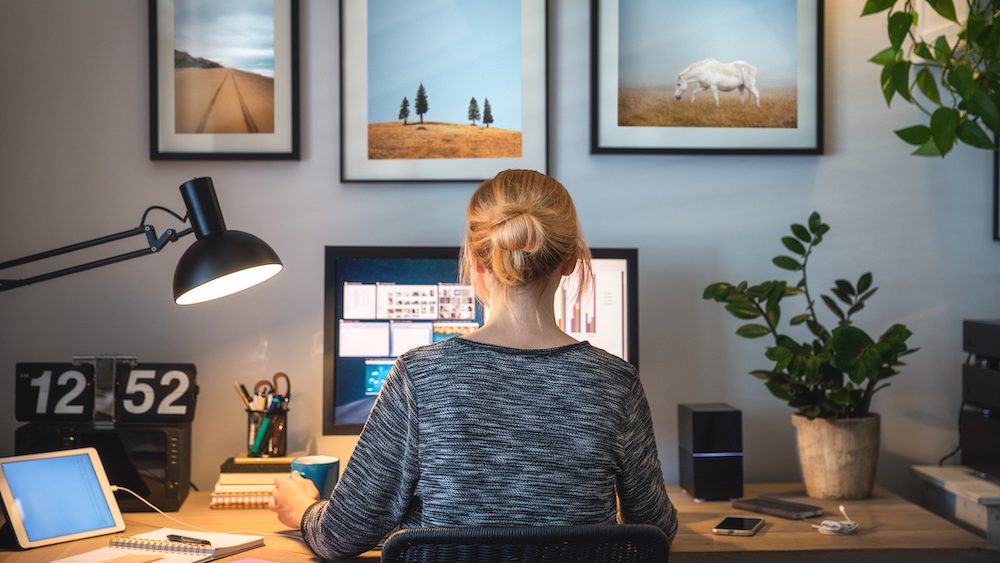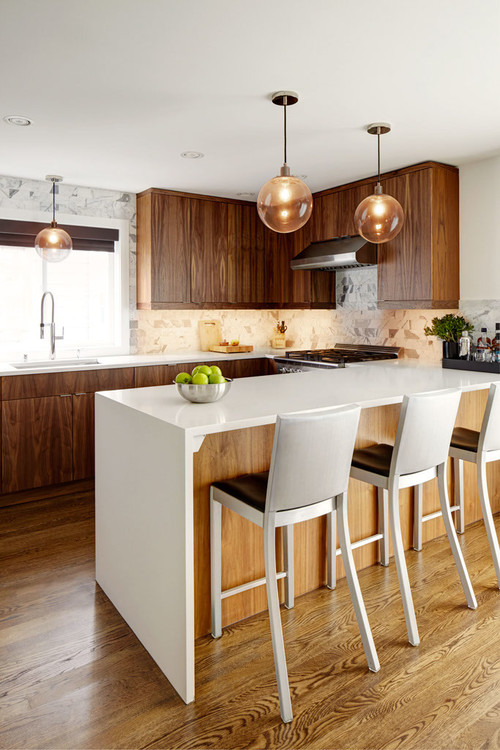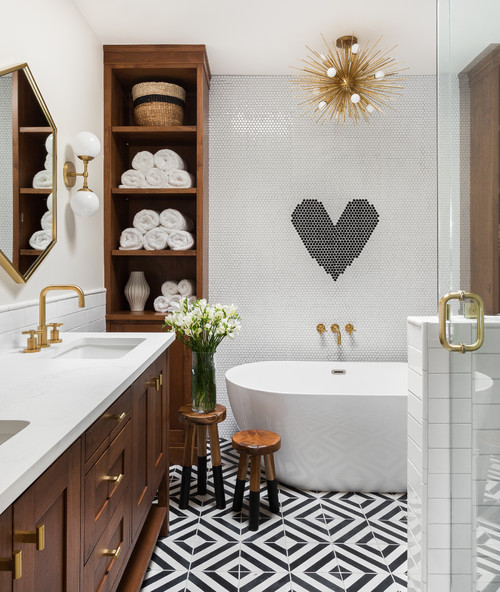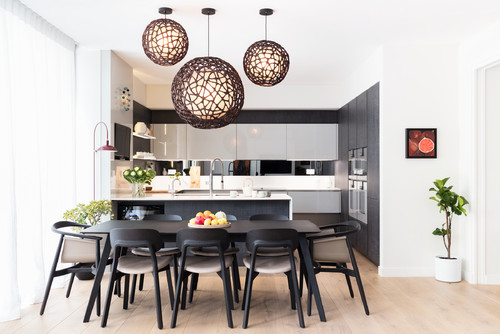
borchee/Getty Images
Most people don’t give much thought to lighting their home. Sure, you may purchase a trendy table lamp or tall torchiere to illuminate a space and that’s about it. But interior lighting can affect the mood of your entire living space—and now that so many of us are spending more time at home, there’s never been a better time to reconsider your lighting choices.
“Proper lighting is a fundamental element that impacts the ambiance in the home,” says Cathy Choi, president of Bulbrite Solana in New York. “Whether you’re waking up for an early Zoom meeting or winding down for the night, your lighting needs change throughout the day.”
But, with what seems like a million lighting options to choose from, it can get confusing. Should you stick with a classic task light on your desk, or is it more beneficial to bring in a floor lamp?
We spoke to design experts to get some clarity and learn about the most common mistakes people make when lighting a home. See how this newfound insight can breathe new life into your living space.
Problem No.1: Using one light source
One bright overhead light may seem like the most efficient way to light up your living room, but it can be harsh and not suited for all hours of the day.
The fix: Layer your lighting using a combination of ambient, task, and accent lights.
Photo by Linda Fritschy Interior Design
Michael Rath, owner of Colorado-based Trilogy Partners, which specializes in custom home designs, says ambient lighting is your base layer of light and provides the main source of illumination for any room. Almost any lighting fixture—like a floor lamp or a pendant light—can provide a room with ambient light.
“When planning to layer your lighting, we suggest the use of dimmers that allow the homeowner the option to adjust the ambient lighting and allow for other layers to be accentuated without sacrificing utility,” Rath says.
Task lighting should be used in areas where you accomplish routine tasks in the home. A desk lamp in the office or a reading lamp next to the bed are examples of task lighting.
Finally, accent lighting completes the overall ambiance of a room, and helps highlight design elements of your space.
“Enhance a fireplace, painting, or entryway with wall sconces, recessed, track, tape, and rope lighting,” says Rath.
Problem No. 2: Lack of task lighting in the kitchen
One of the most important places to have task lighting is the kitchen. After all, there are a lot of tasks to do there!
The fix: Use overhead fixtures, ceiling lights, and under-cabinet lighting to illuminate countertops.
Photo by Michelle Dirkse Interior Design
“Adding these types of lights will ensure a concentrated amount of light right where you need it,” says Choi.
Problem No. 3: Vanity light is the only light source in the bathroom
Vanity lighting looks good in a bathroom but falls short in illuminating the whole bathroom space.
The fix: Use a variety of accent lighting that complements the vanity light.
Photo by BUILT Design Collective
Choi recommends adding a few recessed lights or a well-placed flush-mount or semiflush-mount fixture to complement the vanity light.
“From a real estate perspective, if you’re looking to show and sell this space, you’ll want to make it look bigger and brighter through additional lighting elements,” says Camille Thomas, real estate matchmaker and lifestyle expert in Wyoming.
Problem No. 4: Poor or no lighting in small spaces
A poorly lit room can feel cramped and small.
The fix: Try using soft white bulbs and extra fixtures.
Photo by Kristy Noble Photography
“The right lighting can create the illusion that a space is more open and larger than it actually is,” says Sara Barney of BANDD DESIGN in Texas. “Use soft white lightbulbs to open up the room, and try to incorporate light fixtures wherever they can work in the space.”
Choi says adding additional fixtures like wall sconces, floor lamps, or ceiling lights “can reinvigorate the space, transforming the overall atmosphere.”
Problem No. 5: Your home is too bright or too dark
Going overboard on the use of recessed lights can light up your house like an airport runway. Using too little light can make it feel dark, uncomfortable, and creepy.
The fix: Bring in layered lighting, switch up your bulbs, or leave it to the lighting experts.
Photo by Black and Milk | Interior Design | London
“Combine various sources of lighting for the perfect mix of bright and dim. Incorporate layered lighting—a combination of ambient, accent, and task—that can change as needed,” says Choi. “For additional control, try swapping your existing bulbs with smart LED bulbs ($31.42, Amazon) that allow you to gently dim and brighten them depending on the desired mood or part of the day.”
And if you still need help, consider hiring a lighting expert to create the perfect atmosphere for your home.
The post Still Working From Home? 5 Lighting Mistakes To Fix Now for a Brighter Outlook appeared first on Real Estate News & Insights | realtor.com®.





No comments:
Post a Comment